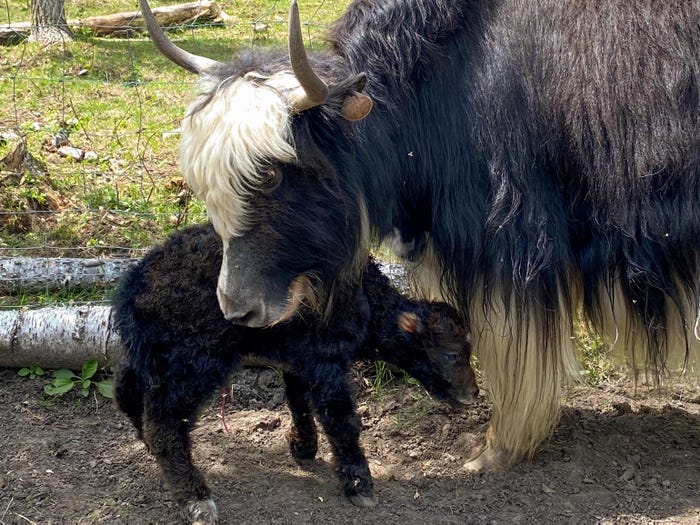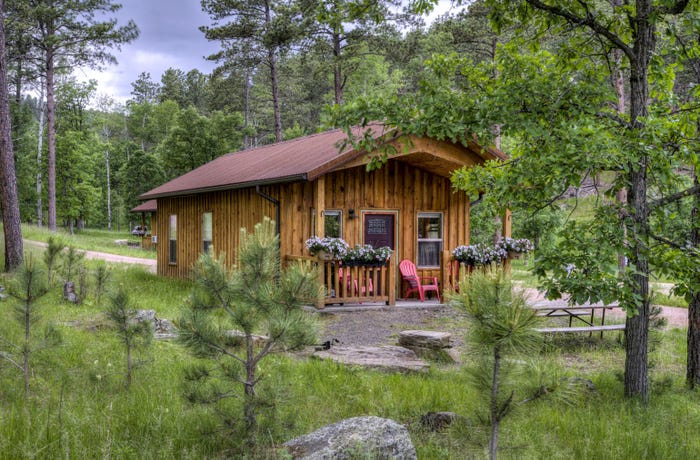August 17, 2020

Yaks certainly aren’t a common sight in South Dakota, and only about 7,000 are found in the U.S. But novelty had little to do with the decision of Jim and Julie Smoragiewicz when this husband-wife team incorporated yaks into their Yak Ridge Cabins and Farmstead business just south of Rapid City.
“My great-great grandparents homesteaded in South Dakota, so I have agricultural roots,” Julie says. “Jim’s father grew up on a farm in Poland.”
While they lived in Rapid City, Jim and Julie had chickens and gardened. With a growing desire to expand on their activities, they purchased a tract of land nearly six years ago. That allowed them to consider how to use the property to achieve some of their lifetime goals.
“Our initial plan for the property was to provide cabins for visitors to the area,” Julie says. “We believed guests would appreciate a farm component. We saw opportunities to give guests a unique experience, provide some food for ourselves and benefit the environment.”
They kept their chickens and, knowing bees are a key pollinator for agriculture, the couple drew on the expertise of fourth-generation beekeeper Tom Repas to set up beehives.
The last goal they wanted to fulfill was to find livestock that fit the resources found on their small acreage.
“We like to camp in the Big Horn Mountains,” Julie says. “So, our first considerations were sheep. For many years we had a desire to raise sheep.”
As they dug deeper into their options for bringing sheep to their operation, Jim and Julie found that many modern-day sheep breeds have been bred to raise twins and triplets.
 YOUNG STOCK: A yak cow protects her calf at Yak Ridge Cabins and Farmstead near Rapid City, S.D.
YOUNG STOCK: A yak cow protects her calf at Yak Ridge Cabins and Farmstead near Rapid City, S.D.

“That could mean birthing issues and bottle lambs,” Julie says. “We wouldn’t have time for those kinds of chores.”
What about goats?
“We found that goats eat everything, and we wanted to maintain the brush on our property for aesthetic reasons,” Julie says.
Small livestock at Yak Ridge Cabins would need a guardian animal to protect them from the coyotes and cougars known to roam the Black Hills area.
“In our search for guardian animals, we learned that yaks are effective guardians,” Julie says. “As we learned more about them, we realized that they were a perfect match for our location.”
Yaks, which originated in the Himalayan mountains, have the blood chemistry to deal with high elevations, such as the 5,000-foot altitude at Yak Ridge Cabins. These animals don’t have a tendency to overgraze pastures, they don’t mind climbing hills and rocks, and their hides have value.
“Yaks haven’t been overbred, so they generally give birth to one calf that weighs between 25 and 35 pounds. They have milk high in butterfat, so calves grow very quickly,” Julie says.
 TOURISTS WELCOME: A rental cabin at Yak Ridge Cabins and Farmstead sits surrounded by pines.
TOURISTS WELCOME: A rental cabin at Yak Ridge Cabins and Farmstead sits surrounded by pines.

On the meat side, yaks have one of the best meat-to-weight-gain ratios, and their meat is known to be healthy.
“Our yaks are grassfed,” Julie says. “And no matter how miserably cold it gets, the yaks can handle it. We couldn’t have found an animal that was a better fit.”
Sorensen writes from Yankton, S.D.
About the Author(s)
You May Also Like




